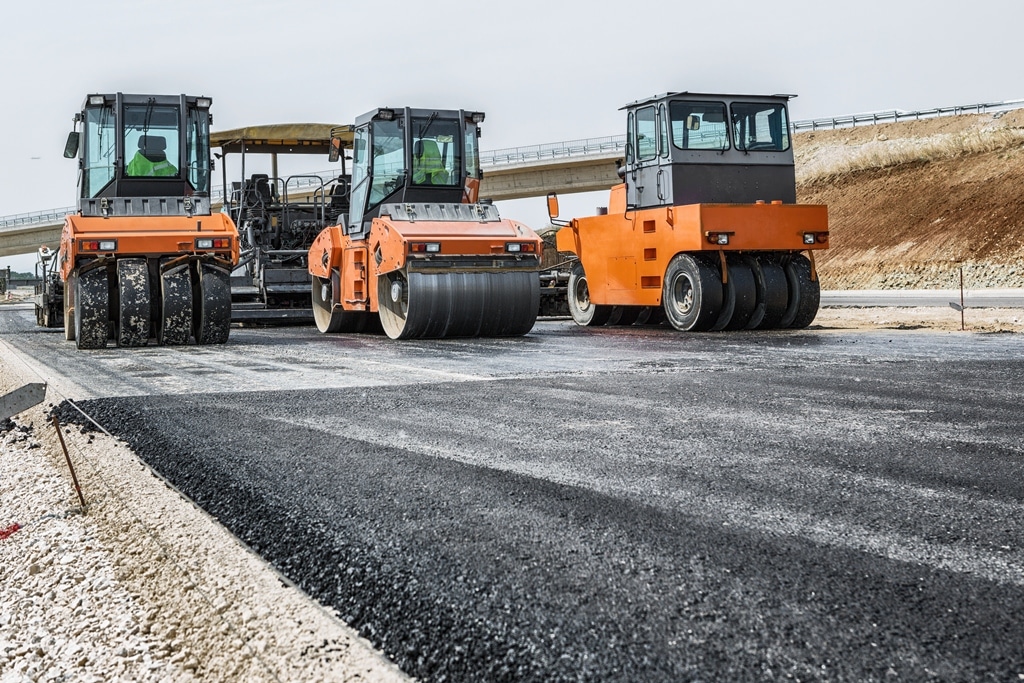Pit roads, crossings and driveways are by nature very dusty. In the general case, the amount of dust kicked up into the air depends on the surface of the road, its condition, weight and speed of vehicle movement. A large amount of dust in the air causes accelerated engine wear, limits visibility and causes serious lung conditions in affected people.
The problem is made worse by the wind. If wind speed is 3 – 5 meters per second, the amount of dust falling outside the road may be 1/3 or 1/2 of the total dust amount. In standard units this is 0.15-0.9 kg/m3. The factors listed above cause visibility problems, forcing traffic to move slowly.
The negative consequences can be alleviated by using modern dust control methods and road surfaces.
The existing methods can be roughly divided into three groups. The first group includes mechanical techniques: washing, blowing, vacuuming. Special equipment may be used: graders, brushes etc. The second group includes techniques of mixing the road top material with special binding and adhesive materials. This results in dust-free agglomerates. The third method is to treat the surface with adhesive materials and chemicals.
The most commonly used method is also the least efficient. The road is rinsed with water and dusted with special brushes. However, the source of dust remains. Besides, at the temperatures above 25 ºС and relative humidity below 50% the water evaporates and the dust returns in half an hour.
The International Road Association suggests the following. First, the surface of the road is prepared, then moisturized and profiled. Then bitumen emulsion is applied to the road. The emulsion may be made with GlobeCore’s USB-2 units with production capacity range from 1 to 8 cubic meters per hour. The USB-2 allows dust control measures to be taken almost year round, from early spring to late autumn (as long as the temperature is above +5 ºС). After introducing the bitumen emulsion, the ground is compacted.
A certain amount of water may be used to dampen the ground and thin the emulsion. This will allow uniform distribution of the emulsion on the surface and easier mixing with the top layer of the road.
Application of bitumen emulsion for dust control on dirt roads has the following advantages:
- process economy. The amount of bitumen emulsion used is relatively small;
- materials treated with bitumen emulsion are more durable;
- it is possible to work with wet materials.
There are also limitations:
- bitumen emulsion cannot be applied to clay materials or materials oversaturated with water;
- flexibility of the reinforced material is low.
For long term dust prevention, the top layer of the road should be treated to the depth of 5 – 6 cm.

